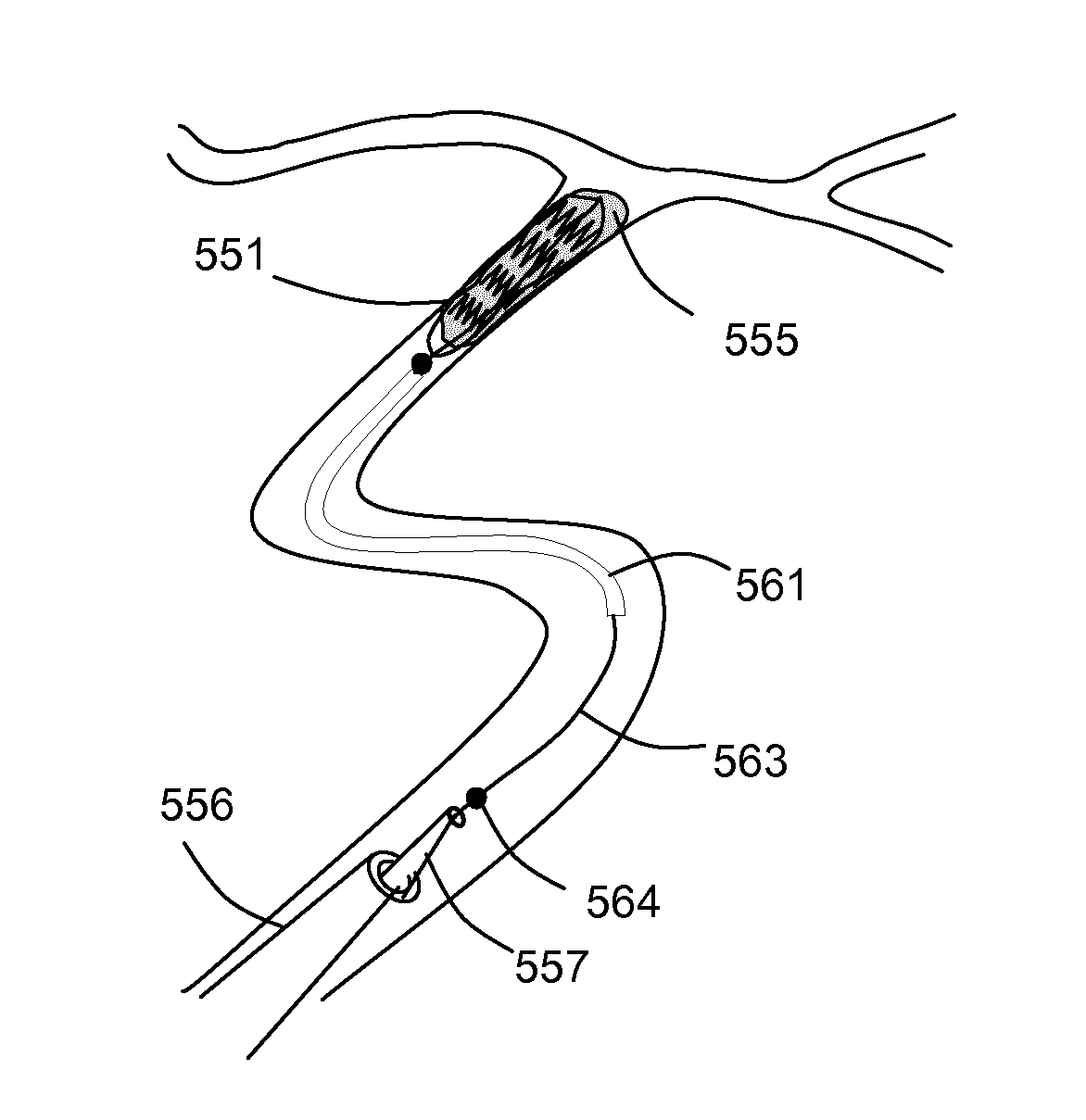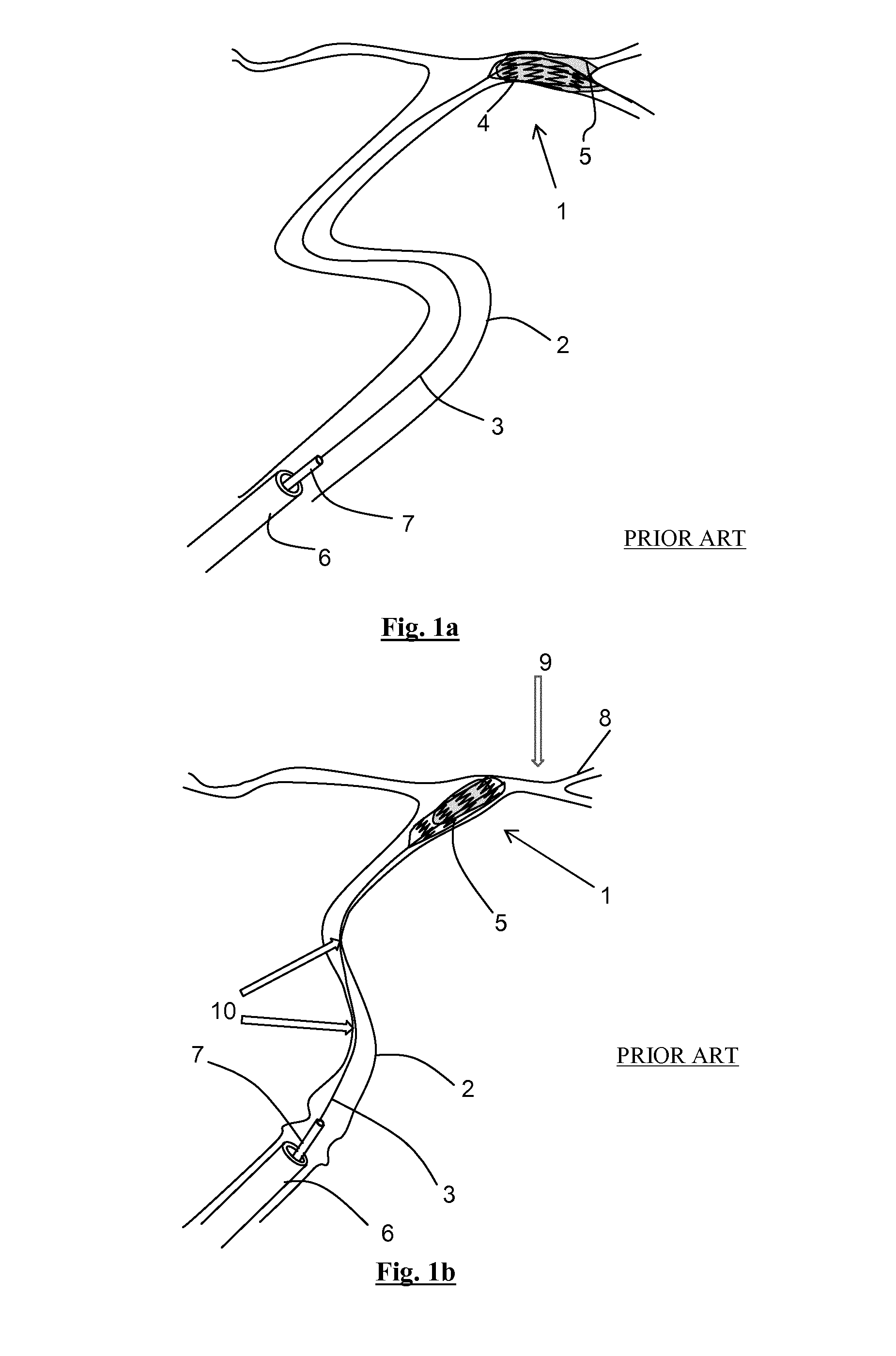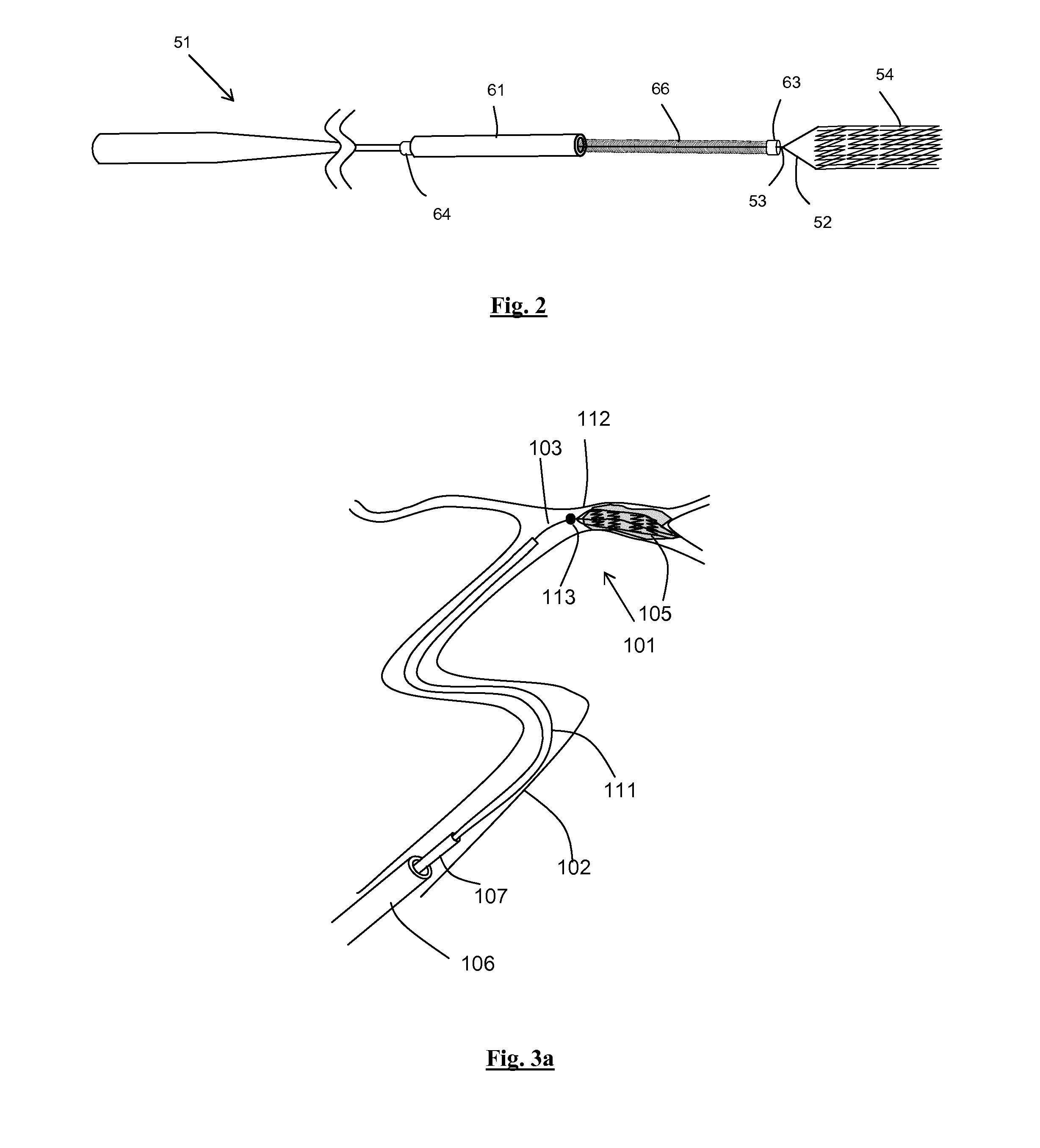A clot removal device
a technology of clot removal and clot plate, which is applied in the field of endovascular medical devices, can solve the problems of dissection or perforation, force required to retract the device, and undesired consequences, and achieve the effects of less friction within the vessel, reducing the effect of abrasion, and reducing the effect of friction within the vessel
- Summary
- Abstract
- Description
- Claims
- Application Information
AI Technical Summary
Benefits of technology
Problems solved by technology
Method used
Image
Examples
Embodiment Construction
[0093]Specific embodiments of the present invention are now described in detail with reference to the figures, wherein identical reference numbers indicate identical or functionality similar elements. The terms “distal” or “proximal” are used in the following description with respect to a position or direction relative to the treating physician. “Distal” or “distally” are a position distant from or in a direction away from the physician. “Proximal” or “proximally” or “proximate” are a position near or in a direction toward the physician. The invention is applicable to any mechanical thrombectomy clot retrieval device, and a generic design of such a clot retrieval device is shown in the illustrations.
[0094]FIG. 1a-b shows the conventional method of retrieving a clot from a tortuous vasculature. A guidewire and microcatheter 7 are inserted into the artery and are advanced across the occlusive clot 5, which is lodged at a bifurcation using any conventionally know techniques.
[0095]The g...
PUM
 Login to View More
Login to View More Abstract
Description
Claims
Application Information
 Login to View More
Login to View More - R&D
- Intellectual Property
- Life Sciences
- Materials
- Tech Scout
- Unparalleled Data Quality
- Higher Quality Content
- 60% Fewer Hallucinations
Browse by: Latest US Patents, China's latest patents, Technical Efficacy Thesaurus, Application Domain, Technology Topic, Popular Technical Reports.
© 2025 PatSnap. All rights reserved.Legal|Privacy policy|Modern Slavery Act Transparency Statement|Sitemap|About US| Contact US: help@patsnap.com



